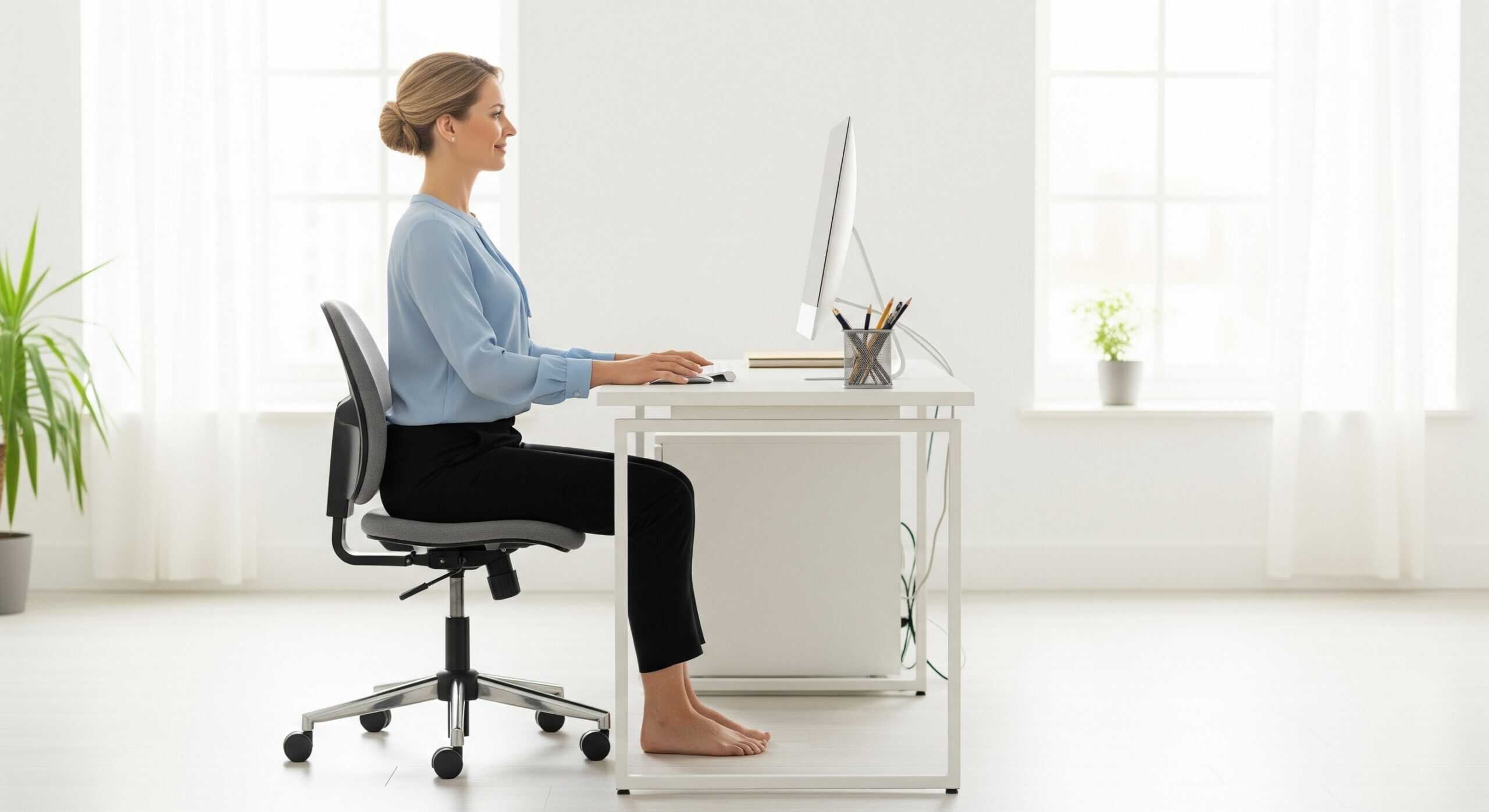In the digital age, many of us find ourselves tethered to our desks, leading to prolonged periods of sitting. While sitting might seem harmless, it can lead to a host of musculoskeletal imbalances and potential injuries and make our overall posture worse over time. Understanding and maintaining proper sitting posture is crucial to mitigate these risks.
Here’s a comprehensive guide to help you sit correctly and maintain your body’s health.
Maintaining a Neutral Spine
The foundation of proper sitting posture begins with a neutral spine. A neutral spine maintains the natural curves of the back, which includes a slight anterior tilt of the pelvis. To achieve this, slightly tilt your pelvis forward, but be cautious not to overdo it, as excessive tilting can lead to tightness in the lower back and thighs, contributing to anterior pelvic tilt issues.
Engaging Your Core
Your abdomen plays a pivotal role in supporting your spine. Gently draw in your navel towards the spine and brace your core as if preparing for an impact. This subtle engagement helps stabilize the lower back and maintains spinal integrity.
Upper Back and Shoulder Alignment
Moving up the spine, your thoracic region—your upper back—naturally curves forward. However, due to common desk job postures, many people overflex this area.
Counteract this by lifting your chest slightly and engaging in thoracic extension. Simultaneously, draw your shoulders back and down, away from your ears, to align your upper back properly.
Neck and Head Position
Your cervical spine, or neck, should also maintain its natural curve without straining. Instead of tilting your head back, keep your chin slightly tucked, and your head pulled back to align it directly over your spine. This position avoids the common forward head posture that can lead to neck strain.
Strategies to Reduce Sitting Time
Even with perfect posture, sitting for extended periods is inherently detrimental. Here are some strategies to reduce the impact of sitting:
- Use a Stability Ball or Kneeling Chair: Swap out your traditional office chair for a stability ball or kneeling chair. These seating options encourage active sitting and core engagement, reducing the likelihood of slumping and spinal misalignment.
- Invest in a Standing Desk: If possible, use a standing desk. Standing while working can be significantly more beneficial for your posture and overall health than sitting.
- Take Regular Breaks: Stand and move every 20-30 minutes. Set a timer as a reminder to disrupt sedentary patterns. During these breaks, perform simple stretches, like the static hip flexor stretch, to maintain muscle flexibility.
Static Hip Flexor Stretch
To perform this stretch:
- Step one leg back, ensuring the knee is behind the hip line.
- Place both hands on the forward knee.
- Lean into the stretch, tightening the glute of the back leg and bracing the core.
- Hold for 30 seconds on each side, feeling a deep stretch in the hip flexors.
Conclusion
Adopting proper sitting posture and incorporating regular movement into your routine can significantly reduce the negative effects of a sedentary lifestyle. Remember, the key to good posture is awareness and consistency.
Implement these tips, and your body will thank you for the care and attention you’re providing in your daily work life.

